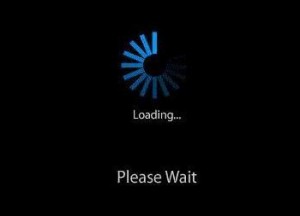Over the years, SEO has changed and evolved dramatically. We’ve seen SEO ranking techniques dominate and fade away, while other come to take center stage. Gurus, marketing leaders, and top internet brands have all published article upon article on the best SEO techniques out there. Some of them have new tips, but a lot of them all have the same techniques.
Instead of making you search the wide web and compare articles, I thought I’d list the best (and most effective) SEO tips and techniques here for you.
Optimizing Your Title and Search Result for SEO
How your webpage or article appears in a search listing is just as important as where it appears in a SERP. The page title, meta description, and URL are all essential key factors to that webpage’s ranking abilities. That result in the SERP is the first encounter a searcher has with that specific page and in the marketing world, first impressions are everything (whether it’s in person or not).
Here’s a few SEO strategy ranking tips to amp up your SERP result:
1. Use brackets, numbers, or parentheses in your title
Personally, I like to use pipes in my titles, but the whole point of changing the visuals of your header is to make it stand out to the eye when a searcher is scanning the results page. Why do you think newspapers and magazines are always using numbers and stats in their titles? It’s creates an expectation in the reader’s mind, but it also draws the eye to the title.
2. Use creative adjectives and emotional words in your title
Once you draw your readers’ eyes with your interesting font styles in the title, hit ‘em with energizing words! Your unique word choice will help to make your article seem enticing over other results and connect with your reader. Given the choice between a generic webpage result title or an interesting title that stands out, which do you think most would click on? That’s one thing click-bait articles got right.
3. Use your keyword in the page title, meta description, and URL
This is an easy way to create intent for your webpage, while still avoiding keyword stuffing. If a searcher sees that their search query matches what appears in your result, they’re more likely to click on it. When a searcher clicks on a result, they expect their query to be answered. Speed the process along by including those keywords from the get-go!
Insider Tip: Another great tip to optimize your result is to include the words or phrases in your meta description that others are using in their AdWords account. While Google may still prioritize AdWords ads because they’re paid, you’ll be saving money and still rank well for the same keyword in SERPs.
If you have SEMrush, MOZ, Searchmetrics, Raven, or another SEO tool, you’ll be able to see what keywords your competitors are paying for.
Creating Optimized Content
Once a searcher clicks on your result, there are advantages to keep them on the page with interesting content. If your CTR is high, but your pogo stick or bounce rate is also high, it may indicate that your content is not as compelling as it could be. This can make it harder for you to convert those visitors.
Here are a few ways to optimize your page content for SEO:
1. Long form content
Generally speaking, you want to make sure every webpage on your website has a good amount of relevant and comprehensive content for your visitors. Every blog article you publish should be at least 1,000. And, research has shown that blog articles around 2,000 words perform the best with the number of click-throughs, shares, likes etc. Longer form content will naturally give you more space to include your target keyword, and also related keywords as well. It’s no secret that Google now prioritizes long form content in their SERPs because that’s what the modern searcher wants.
Writing a 1,000 or 2,000 word article can be a long and involved process, and a lot of us don’t have that kind of time. Never fear!
Instead of creating brand new content all the time, invest in creating “skyscraper content” if you’re strapped for time. Skyscraper content is when you find an article you like and then add several “floors” of new information to it and rework it, so it becomes a new article you can post and claim. Working off an already written article will save you a lot of time.
2. Original content idea development
While you can (and should have) evergreen content on your website, you do want to make sure your articles are original and engaging for your audience. Write about topics your customers want to know about, and that can help them solve their problems. But, if you’re having trouble coming up with topic ideas, there are resources available for you to use! Portent’s Content Idea Generator is a great tool that will give you creative titles based on what you want to write about. Once you have a few ideas for a possible title, you may get some inspiration for other content topics as well!
Including Mixed Media in Your Content
Keeping with the theme of engaging content for search, you should have more on your webpage than just words. Including a balance of text and other media forms helps readers digest the contents of the page easier and process the information more quickly. Breaking up your page with white space and images or videos also gives your readers’ eyes a break while actively engaging them at the same time.
Here’s some ways you can break up your content:
1. Include mixed media throughout your content
Content will always be important and necessary, but you also don’t want to bore your readers will an endless stream of words. Don’t be shy about including videos, images, podcasts, audio files etc. on your page to help keep things interesting!
When including images or pictures on a webpage, make sure you add an ALT text so the images can be indexed by Google. If you choose to upload personal videos, sites like YouTube also let you add descriptions and tags so searchers can find them easier.
If you do want to create a webpage just for a video or image, you need to make sure you do include some text around it. This will help provide context to the reader and allow Google to index your webpage as well.
In Conclusion
All these tips can help your webpages rank better in SERPs and hopefully earn you more web traffic and conversions as well. If you want your result to rank well, it’s important to use all the best SEO tips, not just one or two.
Are there any SEO strategy tips we missed that work well for you? Let us know in the comments below!




